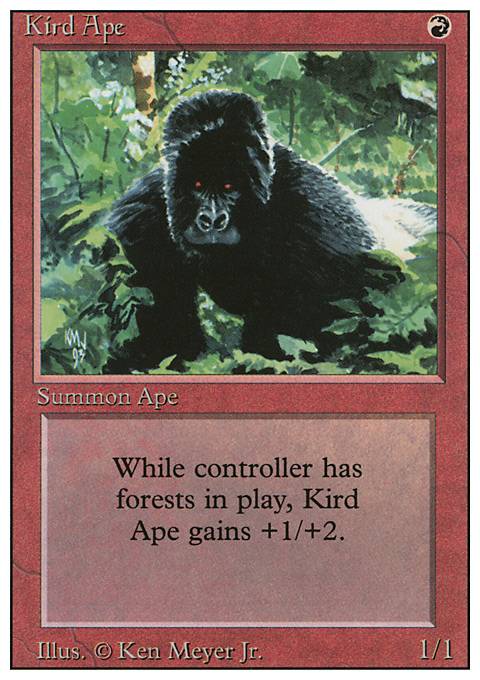+2 Utopia Sprawl, -1 Forest, -1 Mountain: one of my all-time favorite cards and one of the best, most well-balanced mana fixers/accelerants in the game (and easily the best for Pauper), this was a no-brainer for enhancing the mana base. Removing lands to make room for it is unorthodox, but towards the end the deck's construction was getting so rigid that I couldn't work out anything else to pull.
+4 Crumbling Vestige, -4 Rugged Highlands: I can't stand taplands, even multicolored ones, unless they have something else to make up for being so SLOW. Crumbling Vestige alleviates the taplands' main problem with its ETB effect, but is a somewhat risky play, as the colorless mana it produces forever after might make other spells hard to cast. Rugged Highlands is more reliable as the game goes on, but Crumbling Vestige is faster.
-4 Firebolt, -1 Flame Jab: These 5 are a big chunk of the original's lopsided mana issue, and while burn is undeniably effective, it doesn't seem to mesh very well with the deck's heavily creature-driven nature. Firebolt's Flashback cost isn't worth it, and while Flame Jab's Retrace is neat, it's not very reliable and having only 1 in the deck seems almost pointless.
+3 Burning-Three Emissary: On top of being easy to cast thanks to its hybrid mana cost, this creature immediately pays for itself, with niche mana fixing to boot; cast some other goodies, or cast another to lengthen the chain. If you're lucky enough to have all 4 in your opening hand, watch your opponent's jaw drop when you play 4 creatures on turn 2 and still have 2 mana left over to play with.
+2 Goblin Arsonist, -2 Mogg Fanatic: Mogg Fanatic can only serve one of two purposes: a 1/1 creature to attack or block, or a quick ping of your opponent or a creature. The flexibility is neat, but with either choice, there are stronger options for the same CMC. Goblin Arsonist is generally better because it can be used for both purposes, with the only tradeoff being that you depend on combat to destroy it rather than being able to ping at any time, which seems less likely to win matches than getting both effects instead of one or the other.
+2 Rancor: The original deck was a bit lacking in the Trample department, which can make a world of difference. Rancor isn't exactly a creative pick, but in a deck this heavy on creatures, it's undeniably strong. The value for its mana cost is almost unbeatable, it stacks easy, and the return-to-hand effect keeps your threat total high and your hand active, on top of letting you go all-out in combat without worrying about keeping your creatures alive. As long as you've got at least one creature ready to go, these will keep pulling weight.
-2 Moldervine Cloak: Compared to Rancor it may make for a bulkier threat overall, but it's less reusable thanks to the common graveyard removal in black decks, and with the removal of other cards in the deck that can cast from the graveyard, Dredge loses its synergy and ends up just risking the discard of cards you need. Without adding Trample, the mana cost for the benefit just isn't as good as others.
+2 Larger Than Life: The advantage here is similar to Rancor. It's only good for one swing, but that swing will be even harder than with Rancor (though equal in power to cost ratio). The toughness boost lets you swing without risking the loss of the creature (as opposed to Rancor which aims to ignore the risk). Unlike Rancor it's not reusable, but helps pay for Hooting Mandrills.
+2 Lightning Axe: No need to Sideboard these. The biggest change I made to the deck's style was making aggressive combat a bigger factor with Trample and such, so removing a couple of your opponents' blockers gives you an edge.
-1 Hooting Mandrills: Playing more than 2 of these is rare. 4 of them works alright, but they're drawn often enough with 3, so that slot is better used elsewhere.
-1 Blastoderm: I was really hesitant to make this particular change, but making room for new cards was necessary. No other Pauper-legal card can outclass Blastoderm for the same CMC, so keeping 2 of them was a must.
+4 Evolving Wilds, -4 Terramorphic Expanse: Evolving Wilds is prettier lol. In all seriousness, the only reason either one made the cut is because they end up in the graveyard, so they help cast Hooting Mandrills. They're slow, which is not ideal, but fetching the basics you need is still useful.

